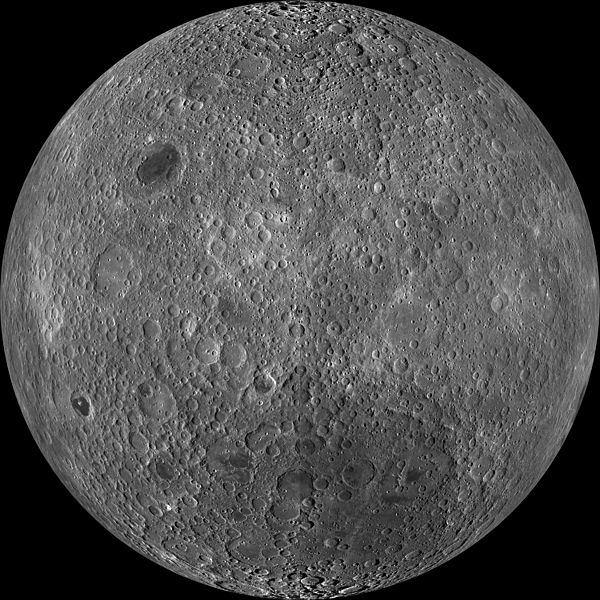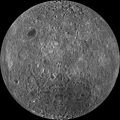Tiedosto:Moon Farside LRO.jpg

Tämän esikatselun koko: 600 × 600 kuvapistettä. Muut resoluutiot: 240 × 240 kuvapistettä | 480 × 480 kuvapistettä | 768 × 768 kuvapistettä | 1 024 × 1 024 kuvapistettä | 2 048 × 2 048 kuvapistettä | 18 000 × 18 000 kuvapistettä.
Alkuperäinen tiedosto (18 000 × 18 000 kuvapistettä, 85,34 MiB, MIME-tyyppi: image/jpeg)
Tiedoston historia
Päiväystä napsauttamalla näet, millainen tiedosto oli kyseisellä hetkellä.
| Päiväys | Pienoiskuva | Koko | Käyttäjä | Kommentti | |
|---|---|---|---|---|---|
| nykyinen | 19. maaliskuuta 2014 kello 23.47 |  | 18 000 × 18 000 (85,34 MiB) | Huntster | High resolution mosaic. |
| 9. huhtikuuta 2011 kello 04.12 |  | 1 600 × 1 600 (1,44 MiB) | Bubba73 | {{Information |Description ={{en|1=Far side of the Moon, by NASA's Lunar Recon. Orbiter}} |Source =http://apod.nasa.gov/apod/image/1104/farside_lro1600.jpg |Author =NASA - LRO |Date =2011? |Permission = |other_versions = } |
Tiedoston käyttö
Tätä tiedostoa ei käytetä millään sivulla.
Tiedoston järjestelmänlaajuinen käyttö
Seuraavat muut wikit käyttävät tätä tiedostoa:
- Käyttö sivustolla af.wikipedia.org
- Käyttö sivustolla az.wikipedia.org
- Käyttö sivustolla be.wikipedia.org
- Käyttö sivustolla bjn.wikipedia.org
- Käyttö sivustolla bn.wikipedia.org
- Käyttö sivustolla bs.wikipedia.org
- Käyttö sivustolla ca.wikipedia.org
- Käyttö sivustolla cs.wikipedia.org
- Käyttö sivustolla de.wikipedia.org
- Käyttö sivustolla en.wikipedia.org
- Käyttö sivustolla en.wikibooks.org
- Käyttö sivustolla en.wikiversity.org
- Solar System, technical/Moon
- User:Marshallsumter/Radiation astronomy2/Visuals
- Draft:Original research/Planets
- User:Marshallsumter/Radiation astronomy2/Visuals/Quiz
- User:Marshallsumter/Rocks/Rocky objects/Astronomy
- User:Marshallsumter/Radiation astronomy/Courses/Principles/Hourly 2
- User:Marshallsumter/Radiation astronomy/Courses/Principles/Midterm quiz
- User:Marshallsumter/Radiation astronomy/Courses/Principles/Final quiz
- Titan/Quiz
- User:Marshallsumter/Rocks/Rocky objects
- Draft:Enceladus/Quiz
- Moon/Quiz
- Stars/Sun/Heliology/Quiz
- Earth/Quiz
- Stars/Reds/Quiz
- Draft:Dione/Quiz
- User:Marshallsumter/Radiation astronomy2/Scattered disks/Quiz
- User:Marshallsumter/Radiation astronomy1/Kuiper belts/Quiz
- Liquids/Liquid objects/Moon
- User:Marshallsumter/Radiation astronomy/Craters
- Käyttö sivustolla es.wikipedia.org
Näytä lisää tämän tiedoston järjestelmänlaajuista käyttöä.

